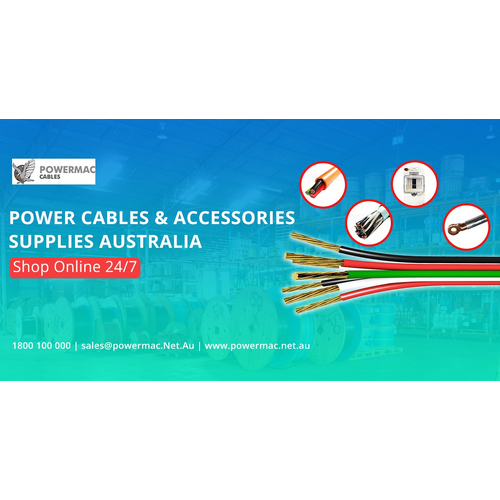What Types of Cables and Wires are Used in the Construction Industry?

When it comes to residential buildings, manufacturing plants, or any other type of commercial structure, the wiring and cabling network are the most important components. Because wires and cables are used to deliver power, control, data, voice communication, and security, among other things, to the entire infrastructure. Follow this blog to learn more about the various types of wire and cable used during the construction phases of any infrastructure.
The following are the six major types of construction cables and wires that are approved by regulatory bodies.
- Single-Core Cables
- Cables with a Non-Metallic Sheath
- Armored Cables
- Instrumentation Cables
- Low Voltage Cables
- Communication Cables
1. Single-core cables:
Single-core cables are probably the safest cables, which is why they are highly recommended in hazardous situations. As the name implies, these cables have a single central conductor surrounded by a mesh of copper wires for insulation.
This coax cable is wrapped in a plastic jacket for extra protection, and two separate layers of galvanized steel are added for extra strength and protection.
The cables can withstand high pressure and are simple to maintain and manage.
They are further subdivided into various categories, each designed to serve a specific purpose, such as computer equipment, cooking appliances, video networks, and so on.
2. Cables with Non-Metallic Sheathing:
Non-metallic sheathed cables are flexible electrical cables commonly used in residential installations. The basic model of these cables includes two insulated wires as well as a ground copper wire to ensure that electrical current flows safely in case something goes wrong.
All of the inner wires are protected by a thermoplastic coating that is extremely heat resistant. A thin layer of paper wrapped around the wires separates the nonmetallic sheath from the inner wires. There are various types of non-metallic sheathed cables. Each one is uniquely designed to meet various residential electrical needs.
3. Armored Cables:
Most cables and wires are designed to transfer data at incredible speeds. However, harsher environments may damage them, and this is why you need armored cables.
The armored cables are heavily fortified cables that are designed specifically to prevent the cables from being cut, abraded, or damaged by external environmental factors. The structure of armored cables includes several protective elements, including a plastic outer jacket, Kevlar, and a ribbed internal steel tube.
The armored cables are widely used in areas prone to mechanical damage. However, the unarmored cable is used to meet the inside cabling needs of any infrastructure.
4. Instrumentation Cables:
Instrumentation cables are extremely rigid and tough cables that are used for inter or intra-communication between construction site operators and the instruments available.
Instrumentation cables are only used at the industrial level, so they are designed for strength and stealth. The additional layer of protection makes instrumentation cables resistant to moisture, corrosive elements, chemical agents, oil, solvents, and other elements.
5. Low Voltage Cables:
Low voltage cables are used to transmit electrical signals with voltages ranging from 50-1000V for AC and 75-1500V for DC. LV cables are made up of central aluminum or copper conductors that are shielded and insulated with various compounds.
Sound and security, video surveillance, lighting, automation, and fire alarm are just a few of the applications for low voltage cables. They are also used in static conditions or environments that require protection against electrical or mechanical damage.
6. Communications Cables:
Communication wires and cables are used to transfer electrical signals from one location to another in order to facilitate quick communication. Hence, many residential or commercial structures rely on coaxial conductors, optical fibers, or twisted wire pairs as the data transmission medium.
The transmission mediums are protected from rough handling and/or external environmental factors by the external plastic jacket or outer sheath.
The primary applications of communication cables are data transmission, electronic circuits, intercoms, and so on.
All of the major cables used in building construction are further subdivided into smaller categories, making it easier to meet a wide range of residential/commercial requirements. So, always use the right type and highest quality of cables and wires not just to comply with regulations but also to save money and time in the long run.
Powermac provides high-quality electrical cables for any construction project throughout Australia. Make Powermac Cables your first choice for all your electrical cable needs, whether you're in the residential, industrial, or commercial sectors. For more information, please call 1800 100 000 or visit Powermac.net.au.
